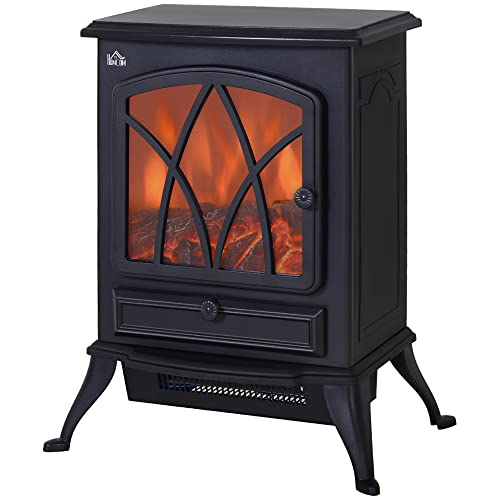
Fireplaces And Stoves
Add a review FollowOverview
-
Founded Date November 6, 1936
-
Sectors General
-
Posted Jobs 0
-
Viewed 75
Company Description
15 Best Wood Burner Fireplace Bloggers You Need To Follow
How to Get the Most From a Wood Burner Fireplace
 Wood stoves, unlike traditional open fireplaces, are designed to use wood for combustion. This enables them to comply with the stricter emission requirements.
Wood stoves, unlike traditional open fireplaces, are designed to use wood for combustion. This enables them to comply with the stricter emission requirements.
 Wood burning stoves produce glowing yellow flames that dance and warm crackling noises. They also give you an incredibly warm feeling. The smoke produced contains toxic air pollutants like benzene, formaldehyde, and polycyclic aromatic hydrocarbons.
Wood burning stoves produce glowing yellow flames that dance and warm crackling noises. They also give you an incredibly warm feeling. The smoke produced contains toxic air pollutants like benzene, formaldehyde, and polycyclic aromatic hydrocarbons.
Efficient
Fireplaces and stoves that burn wood offer a stunning and natural heat source to the home, they are also incredibly efficient. A quality wood stove can achieve an Ecodesign rating of as high as 77%. It is essential to get the most value of your wood burner, especially with increasing energy costs. The good news is that it’s now easier than ever before to do!
The moisture content of firewood is a key factor that determines how efficient a wood-burning stove is. We recommend using only dried and seasoned wood that has dried for at least one year, and often two years. The drier the wood the more efficiently it burns which results in less smoke and less harmful emissions.
Another benefit of a wood burning stove is that it’s a low carbon source of fuel, which is great for the environment. Additionally, by purchasing locally-sourced firewood, you are helping to promote the active management of woodlands which is a good option for wildlife.
In terms of maintenance concerned, the only requirement for a wood stove is to frequently scoop up and dispose of the ash. It’s quite a challenge, but it is worth it to get the most heat from each log. If you allow the ashes to cool completely, they can also be used as a non-toxic and eco-friendly melting ice. They can also be used to polish jewellery and remove smells.
A wood burner fireplace is a truly timeless classic. Although they’re less well-known than gas fireplaces, the allure and appeal of a fire that is roaring can’t be disregarded. These fires are great to snuggle up with on cold nights, and they create a warm and welcoming space within your home. Investing in a high-quality wood stove will pay off for a long time. Our expert chimney sweeps are here to assist you in getting the most value from your stove – give us a call now to find out more.
Low Carbon
Wood burners that are efficient and clean are among the most efficient ways to save money on logs and keep your home warm. They also help local woodland management. This is an excellent way to support the wildlife that lives in your neighborhood.
Wood-burning fireplaces and stoves create very little pollutant if they are maintained properly and are used with dry, seasoned and dry firewood. When they are not properly maintained or when they make use of wood that is not of high quality the smoke produced contains fine particles, commonly referred to as particulate pollution that can cause irritation to lung organs and other body organs. Carbon monoxide, air pollutants that are toxic such as formaldehyde and benzene, and polycyclic aromatic hydrocarbons are also in the. Inhaling this type of air pollution may cause irritation to the lung wheezing, coughing and asthma attacks. It can even cause serious health issues like heart disease, cancer, or premature death.
Some people worry that using a wood burning stove will contribute to climate change, but this is not necessarily the case. The combustion of wood produces energy that is carbon neutral. In the course of the life of a tree, it absorbs carbon dioxide and when burned the carbon absorbed is released back into the atmosphere.
Since the wood is sourced locally this decreases the amount of pollution that is released in the process of transportation. It is also important to select top quality, seasoned hardwoods as these will provide an extended and even burn than softwoods.
Modern wood stoves, such as the ones made by Charlton & Jenrick, emit significantly less pollutant than older stoves. They are certified to meet 2020 EPA standards which are significantly more stringent than the previous emission limits.
To avoid the buildup of exhaust in your home, all wood-burning stoves should be vented to the outside. All our current DEFRA-exempt and clean burn stoves can create clear exhaust when keeping the flames at a distance from the wood logs and using dry well-seasoned, clean firewood.
A wood-burning stove with a catalytic converter is the ultimate low carbon heating option. These units re-ignite gases and particles that were ignited during the initial burning in a subsequent phase by mixing them superheated air. They then funnel the remaining gasses and particulates through a catalytic combustor for the third and final combustion, further reducing emissions to a level well below government standards.
Clean Burn
Cleanburn wood stoves are made to burn fuel with the greatest efficiency that is possible. This results in the release of a small amount of particles into the air when burning wood. The air management system of the stove regulates the intake and exhaust of gases, ensuring that the combustion process takes place in a safe and controlled environment. It also regulates flame height to maximize the output of heat and reduce emissions.
This means that your chimney and the surrounding area will be a lot cleaner than older stoves. Particulate matter, also referred to as particle pollution, resulting from wood that is not properly burned can cause respiratory issues, like coughing and wheezing, and contribute to heart diseases and stroke, diabetes and other serious conditions. Air pollution caused by wood burning is a contributory factor in poor urban air quality.
Smoke from poorly combusted timber has fine particulate pollution and dangerous air pollutants like carbon monoxide, as well as other dangerous air pollutants such as nitrogen oxides and volatile organic compounds (VOCs) as well as benzene and formaldehyde. These particles can get into the organs of the lungs which can cause discomfort, damage and even death. Airborne dust can also contaminate the surfaces of your home and give an unpleasant sludge-like feel to rooms.
It is important to select high-quality, seasoned and dried firewood when using your wood burner fireplace. Hardwoods such as oak beech, ash and are the best for heating. Hardwoods have a higher density and BTU content and they offer more heat than softwoods.
It is also important to determine if your local authority has any regulations regarding wood burning. These may include nuisance/odor rules and visible emissions or smoke opacity limits.
If you have a wood burner with glass doors it is essential to keep the glass clean of grime and deposits. You can use a dry cloth or oven cleaner spray for this. You can also add bicarbonate of soda mixed with a little water to the glass.
Regular maintenance is crucial for your stove and chimney. Regular chimney cleanings are necessary to eliminate creosote, and to ensure that the flue is operating properly. It is also important to mark the dates for periodic inspections on your calendar. This will help you avoid costly repairs and extend the life of your wood burner.
Low Maintenance
Wood burning fireplaces are popular because they provide a natural warmth. However, this kind of fire requires some care and maintenance. The chimney, flue and stove are all potential sources of house fires if not cleaned and maintained regularly. Fireplaces can also provide heat in the event of an electrical outage, especially during winter storms where branches of trees can fall and power lines can be damaged.
By using a wood stove to heat your home, you can reduce your carbon footprint when compared to other fossil fuel sources like gas. Modern wood stoves, inserts and fireplaces are constructed to meet EPA standards (Environmental Protection Agency) which means they emit very little carbon dioxide. The more well-seasoned wood is and the better it is, the more efficient it will be as well and you’ll use less of it to produce the same amount of heat.
The fireplaces need some maintenance and care. They must be kept clear of the combustible materials and have a screen in place. The flow of air will be improved by keeping the grate clean of ash and other debris. This will ensure that the fire is burning longer and your home clean. You should have your stove and chimney cleaned at least twice per year to prevent the build-up of creosote which could create a fire hazard and a blockage that can hinder ventilation.
It could take a while for a new homeowner to master the art of how to light, ignite and maintain a constant fire in the fireplace. However, once you have achieved the art of creating and maintaining a fire in your wood burner, it will be a source of lasting enjoyment that provides warmth and warmth to your home year after year.
Wood burning fireplaces are around in one form or another for over 500 years. They’ve gained a lot of attention because of their efficiency, sustainability and the natural warmth that comes from wood. If you’re considering installing a new heater, speak with your local Regency certified dealer to find out more about the advantages of an insert or stove made of wood for your home.


